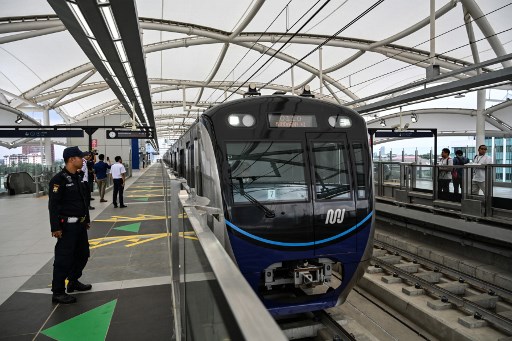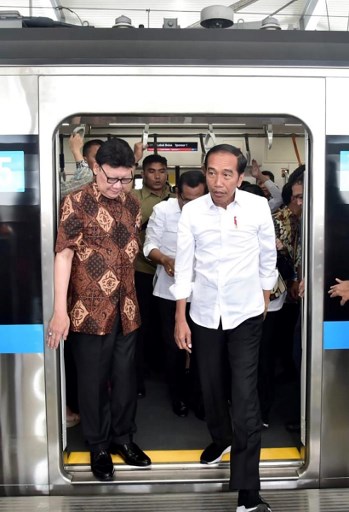
by Kiki Siregar
Agence France Presse
JAKARTA, Indonesia (AFP) — Jakarta commuter Irnawati can spend up to four hours daily in her car, but now she and millions of others may get some relief as the traffic-clogged Southeast Asian city opens its first mass rapid-transit system.
On Sunday, Jakarta will inaugurate the $1.1 billion project seen as crucial to tackling some of the world’s worst congestion, which can turn commutes into hours-long endurance tests.
For Irnawati, the new line means she might now be able to move back to her suburban home on the edge of the Indonesian capital.
After getting fed up with the gridlock, she resorted to renting a room near the office during the week rather than face a torturous drive in the vast metropolis of 30 million.
“I can hardly wait until the MRT starts operating,” the 36-year-old, who goes by one name, told AFP.
“It’ll save me lots of time and make my commute much more convenient and safe.”
Over the past decade, rising incomes in the country of 260 million has created a ballooning middle class and sent vehicle ownership soaring.
But it’s also brought hazardous air pollution and costs billions annually in economic losses as cars crawl along its roadways in the steamy tropical heat — alongside an underused bus system.
The 16-kilometre (10 mile) line will stretch from central Hotel Indonesia to Jakarta’s south, almost six years after construction began on the Japanese-backed project.
It aims to cut travel times between the two points to just 30 minutes from about two hours.
Construction on a second line linking downtown to Jakarta’s northern port is also kicking off Sunday with completion set for around 2024, with more lines envisioned in future.
A separate elevated rail network is being built to link satellite cities with Jakarta, nicknamed the Big Durian after the pungent fruit that bitterly divides fans and its detractors.

– ‘Changing the culture’ –
The public transit projects are part of a sweeping infrastructure push that president Joko Widodo hopes will boost Indonesia’s fortunes — and get him re-elected in national elections next month.
But transport analysts cautioned that the new line and cheap prices won’t be a cure for a city with few decent sidewalks and a vehicle friendly culture.
“The MRT won’t immediately ease the traffic because changing the culture and attitudes isn’t easy,” said Hendi Bowoputro, a public transit expert at the University of Brawijaya.
And the 130,000 expected daily passengers for the line represents only about 10 percent of those who already cram into a decades-old commuter rail network.
Incentives to cut down on vehicle use — or punitive measures such as increased parking costs and expanding Jakarta’s odd-even license plate system which restricts cars on certain days — could create lasting change, analysts said.
Environmentalists hope that the new line will cut traffic-linked carbon emissions by about half.
It could also make a dent in annual economic losses of some 65 trillion Rupiah ($4.6 billion) linked to road congestion, according to government figures.
Once the second line is completed, Jakarta might be closer to a city like Paris, where residents spend a small chunk of their monthly income on public transit, creating a strong incentive to ditch their vehicles, said Djoko Setijowarno, a transport analyst at Soegijapranata University.
“But for this to happen, all of the public transit would need to be integrated with residential areas,” Setijowarno said.
Despite high hopes among enthusiastic commuters, even Irnawati has some doubts about how well connected she’ll be to public transit.
“I’d probably end up paying to take a motorbike taxi from the last station to my house,” she said.
“That would be pretty inconvenient and not very comfortable, especially when it rains.”
© Agence France-Presse







